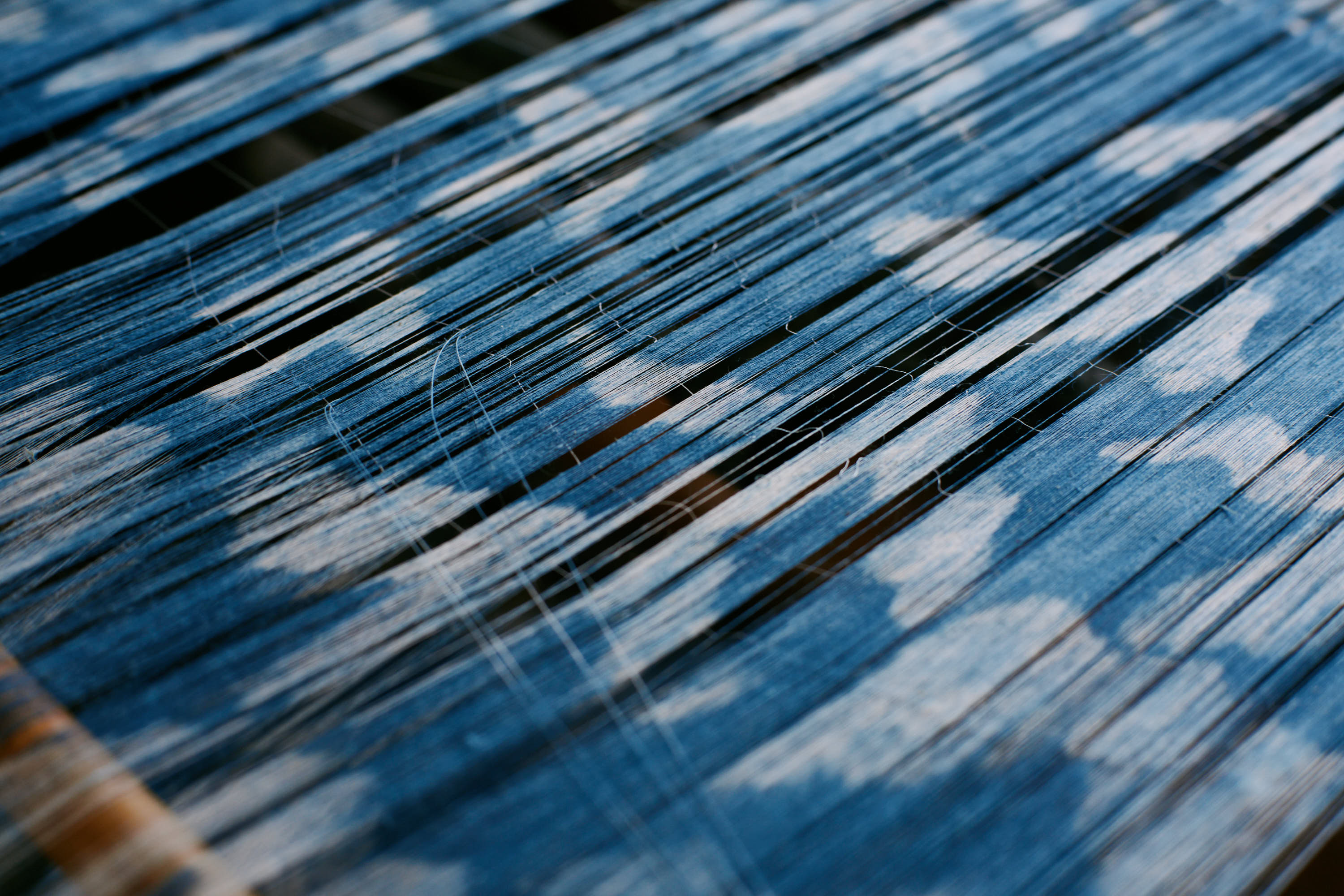
Textile Techniques
Stories Woven from Craft and Nature
Natural Indigo Dyeing (Hon-date Aizome)
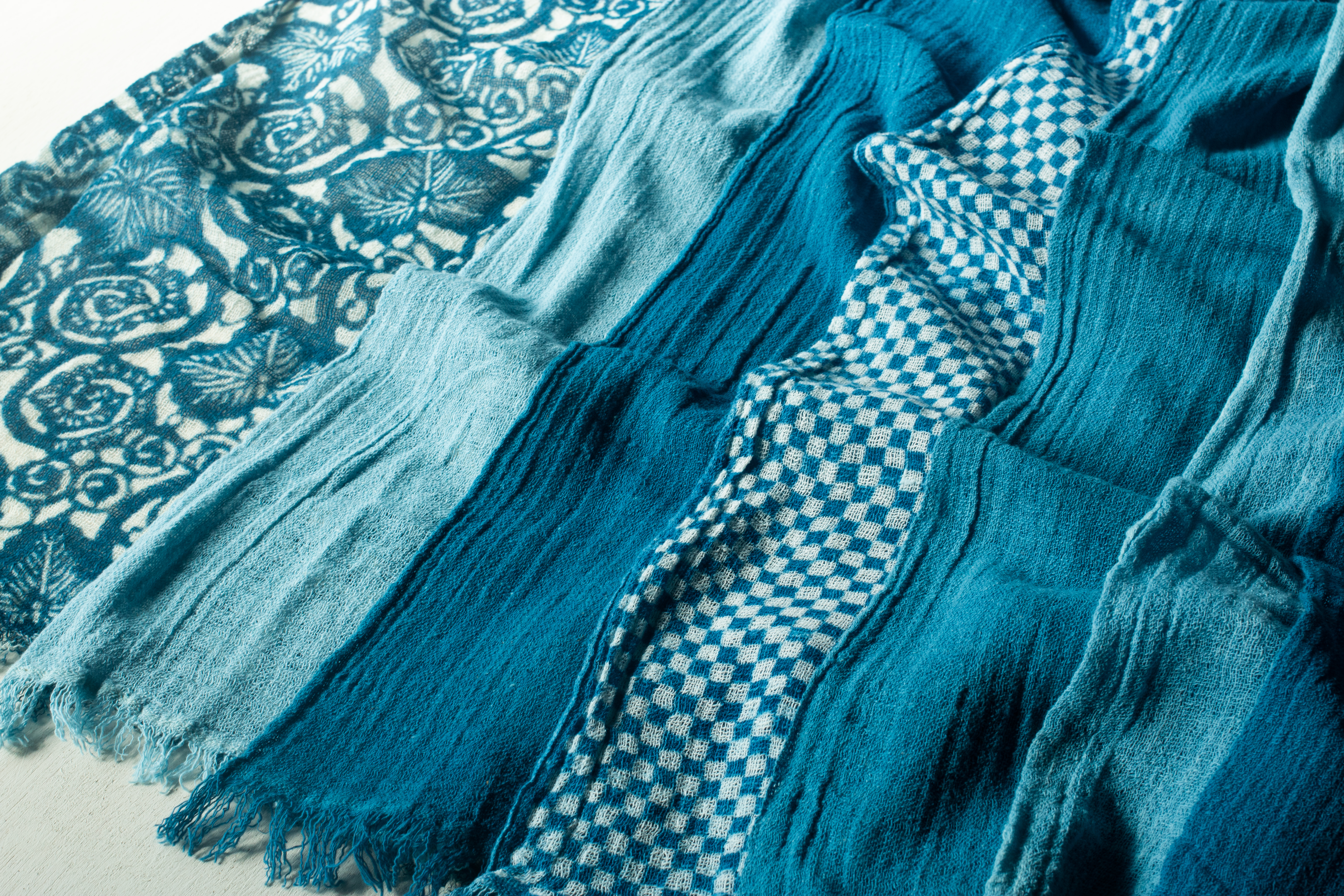
Hon-date aizome refers to the traditional fermentation-based method of indigo dyeing using only natural ingredients — fermented indigo leaves (sukumo) and lye made from wood ash, maintained with lime and wheat bran.
This slow and living process produces cloth that is antibacterial, moth-repellent, and remarkably colorfast — a blue that deepens with time and wear.
- Sukumo — composted and fermented indigo leaves.
- Tateru — the act of fermenting the indigo vat.
- Hon-date — the original fermentation method passed down through tradition.
The technique is based on the teachings of the late master Koichi Okawa of “Konyū” in Sano, Tochigi Prefecture.
Katazome (Stencil Dyeing)
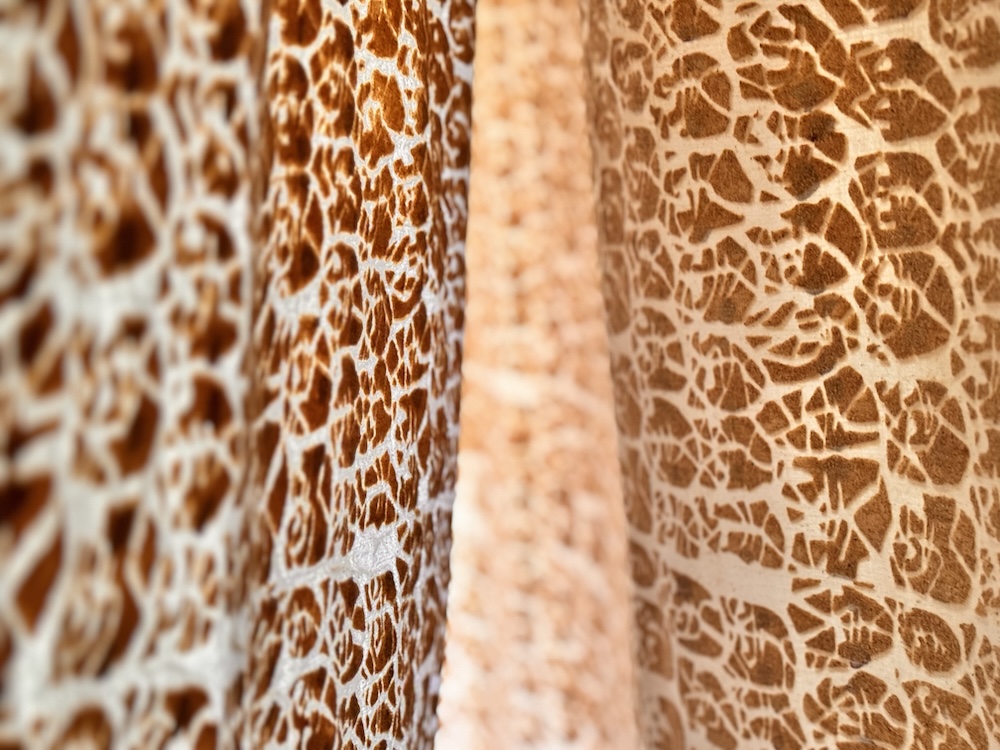
Katazome is a traditional Japanese stencil-dyeing technique. Patterns are cut into handmade washi paper and applied to fabric using a rice-paste resist made from glutinous rice.
The precision of the pattern carving and the organic paste combine to produce subtle, tactile surfaces — expressions of Japan’s agricultural culture and craft innovation.
At Kazetuti, indigo is used for blue, and pigments such as iron oxide for red tones. Together, these form what we call “Shō-ai Katazome” — indigo stencil dyeing.
Hand-spun Cotton
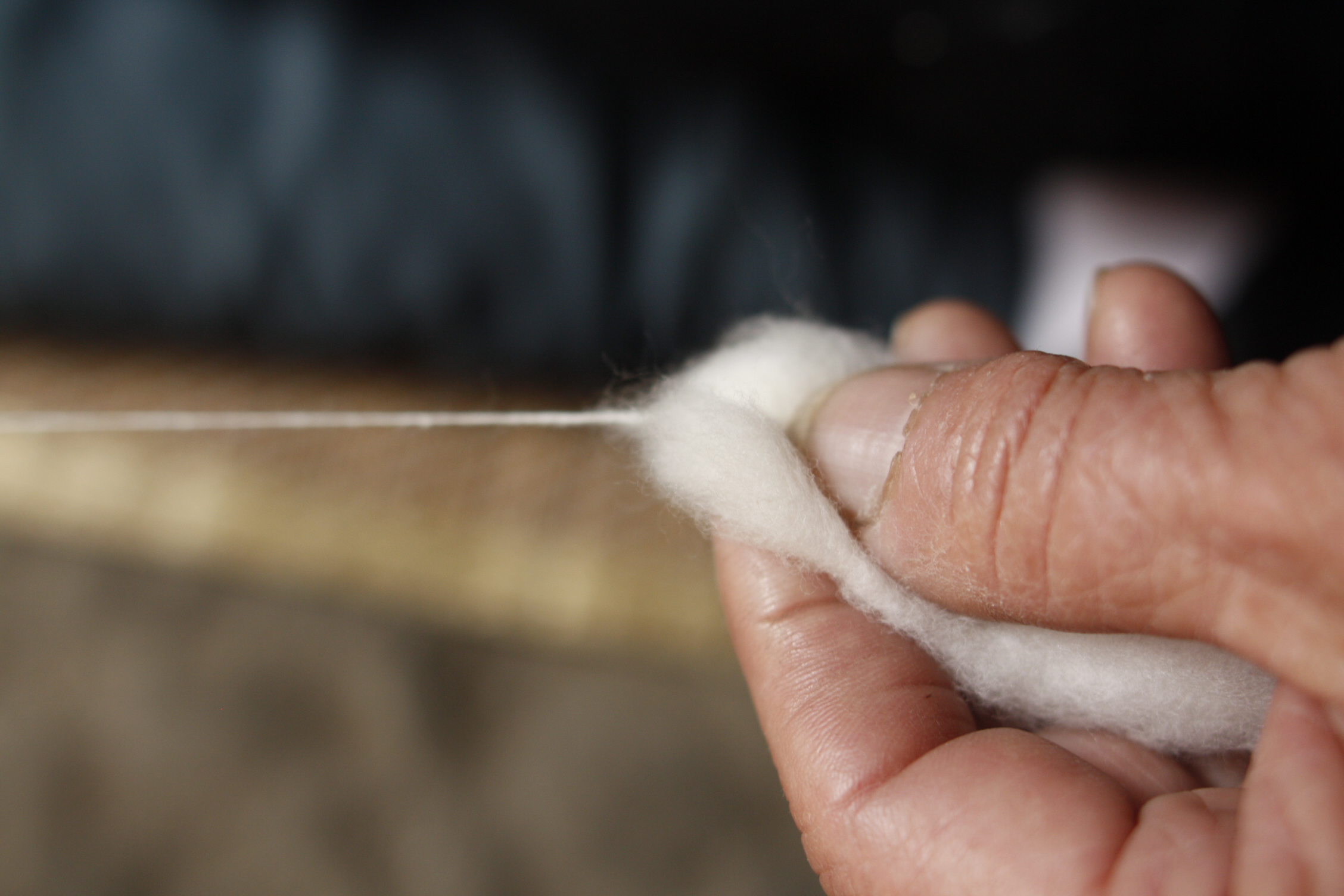
Hand-spinning — using a simple spinning wheel — produces threads with subtle irregularities in thickness and twist. These variations give the fabric a soft texture and warm expression that cannot be replicated by machines.
Naturally Grown Cotton
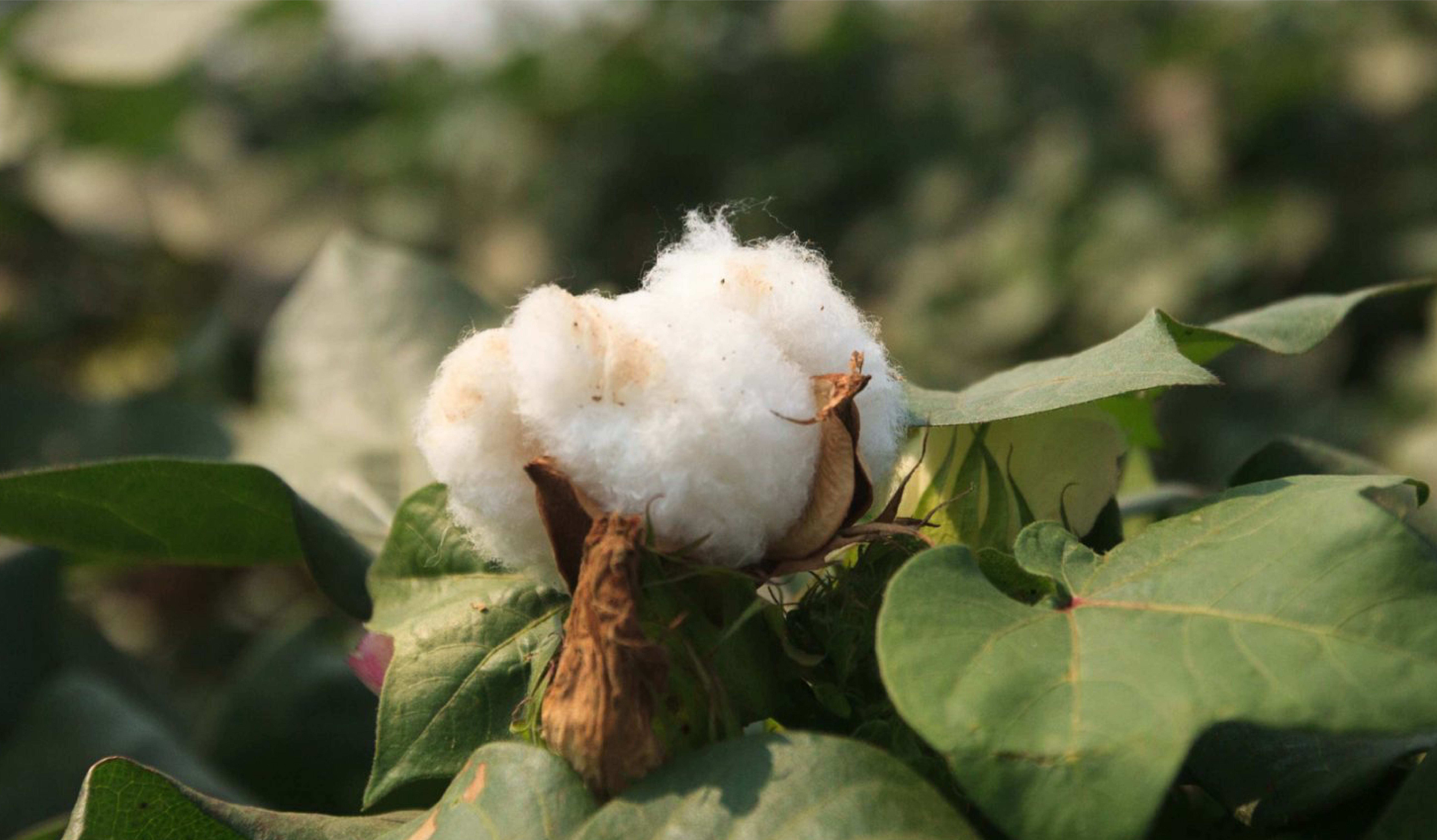
The cotton we use is cultivated without agricultural chemicals or synthetic fertilizers — grown carefully by hand from seed to harvest, on soil that has never been chemically treated.